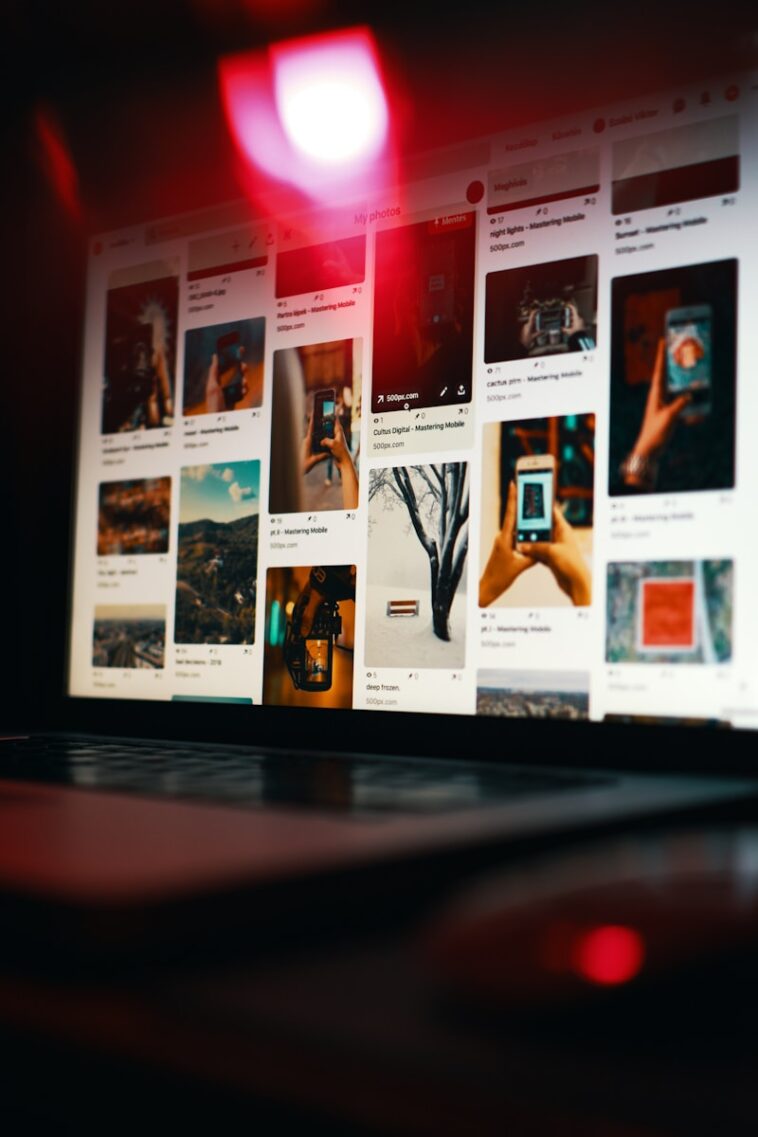If you’re selling digital products—like ebooks, courses, printables, templates, or stock photos—Pinterest might just be one of your best marketing tools.
Most people think of Pinterest as a place to find recipes, wedding ideas, or DIY crafts. But here’s the thing: it’s actually a powerful visual search engine.
That’s what makes it perfect for getting your digital products in front of people who are already looking for solutions and inspiration.
I’ve used Pinterest to drive thousands of clicks to digital products without spending a huge budget on ads. And the best part? The pins you create today can keep working for you for months or even years.
Pinterest has a long shelf life compared to other social media platforms where posts disappear within hours.
If you’re wondering how to actually advertise your digital products on Pinterest in a way that feels manageable and gets results—without wasting time—this guide is for you.
I’ll walk you through the basics, show you how Pinterest ads work, and share tips I’ve picked up along the way. Let’s get into it.
Why Pinterest Is So Good for Digital Product Sellers
Here’s what makes Pinterest different:
People come to Pinterest ready to plan and buy. Around 80% of weekly users say they’ve discovered a new brand or product on Pinterest. Source: Pinterest Business
Pinterest isn’t just social media. It’s a visual search engine—like Google, but with pictures.
Pins last a long time. One pin can keep driving traffic for months, even years. That’s not true on Instagram or TikTok.
It’s great for niche audiences. If your digital product solves a specific problem, chances are people are already searching for it on Pinterest.
This is why I love it: You don’t need a huge following. You don’t need to go viral. You just need the right visuals, keywords, and strategy.
What You Can Advertise on Pinterest
Before we dive into the how, let’s talk about what types of digital products work well on Pinterest.
Some popular examples:
Online courses (think: design, writing, fitness, coding, mindset)
Printables (planners, checklists, journals, coloring pages)
Ebooks and guides
Lightroom presets or Canva templates
Stock photography or design assets
Memberships or subscription-based content
Coaching or consulting services (if they’re packaged digitally)
If your product is downloadable or delivered online, Pinterest can help you sell it.
Organic vs Paid: Two Ways To Promote on Pinterest
You’ve got two main options:
1. Organic Pins (Free)
This means you create and upload pins for free, optimize them with keywords, and let Pinterest search do the work. It takes a little time, but it’s super effective and doesn’t cost anything.
2. Promoted Pins (Paid Ads)
This is Pinterest’s version of ads. You pay to put your pins in front of your ideal audience. It’s great if you want faster results, test offers, or scale something that’s already working.
I recommend starting with organic to learn what your audience likes—then boosting your best-performing pins with ads.
How Do I Set Up My Pinterest for Selling Digital Products?
Step 1: Create a Pinterest Business Account
You’ll need a business account to access analytics and run ads. It’s free, and you can either convert your personal account or start fresh.
Set up your Pinterest Business account here
Step 2: Claim Your Website and Set Up Rich Pins
Claiming your website helps Pinterest understand your content and gives you access to extra features like Rich Pins, which automatically pull info from your site (like product titles or pricing). It also makes your account look more trustworthy.
Step 3: Set Up Your Profile for Sales
Add a clear profile name and description using keywords your audience is searching for. Use a profile image that fits your brand. Link to your shop or landing page in your profile.
Creating Pins That Actually Sell
This is the fun part—but it’s also where a lot of people get stuck. Here’s what works best:
1. Pin Design Tips
Use vertical images (1000 x 1500 px is ideal)
Bold, easy-to-read text overlay
High-quality visuals
Include your logo or website for branding
Keep it clean and clutter-free
2. Write Clickable Pin Titles and Descriptions
Think like your buyer. What are they searching for?
Use keywords naturally in your title and description. For example:
Bad title: “Planner”
Better title: “Printable Weekly Planner To Stay Organized”
Don’t forget to include a call to action—like “Get yours now” or “Download the free sample.”
3. Link to a Landing Page That Converts
Your pin should link to a page that matches the promise of your pin. If your pin says “Free Ebook Template,” your landing page should deliver just that—without distractions.
Use clear copy, a strong headline, and one call to action. You don’t need a complicated funnel. Just keep it focused.
Using Pinterest Ads (Promoted Pins)
Once you’ve got some pins performing well, you can try Pinterest ads to reach more people.
How Pinterest Ads Work
Pinterest ads look just like regular pins, except you pay to show them to a larger, targeted audience.
You can target based on:
Keywords (what people are searching)
Interests (like fitness, home decor, etc.)
Demographics (location, gender, language)
Behavior (people who’ve interacted with similar pins)
Budget and Strategy
You don’t need a big budget to start. Even $5–$10 a day can go a long way if your targeting is right.
I recommend testing ads with:
Your best-performing organic pin
A freebie or low-ticket offer (like a $9 template)
A warm audience (people who’ve visited your site)
Start small, watch what’s working, and adjust as you go.
How To Track What’s Working
Once your pins are out there—organic or paid—you’ll want to see what’s driving clicks and sales.
Use:
Pinterest Analytics: Shows impressions, saves, clicks
Google Analytics: Tracks how much Pinterest traffic turns into sales
UTM links: Helps you track specific campaigns (use a tool like Campaign URL Builder)
Over time, double down on what’s working and cut what’s not.
FAQs
How many pins should I create?
I usually aim for 5–10 pins per product, each with a different angle or design.
Can I use Canva for pin design?
Absolutely. Canva is perfect for this, and they even have Pinterest templates built in.
What if I don’t have a blog?
That’s totally fine. You can link your pins directly to your product page, sales page, or a landing page.
Do I need followers on Pinterest?
Nope. Pinterest is search-based, not follower-based. Good content + keywords = results.
Final Thoughts
Pinterest is one of the most underused platforms for digital product sellers—but it doesn’t have to be overwhelming. Once you learn the basics and get into a rhythm of creating pins, it can become one of your best traffic drivers.
And remember, it’s not about chasing trends or going viral. It’s about being clear, helpful, and consistent.
So, what kind of digital product are you thinking of promoting on Pinterest first?





GIPHY App Key not set. Please check settings